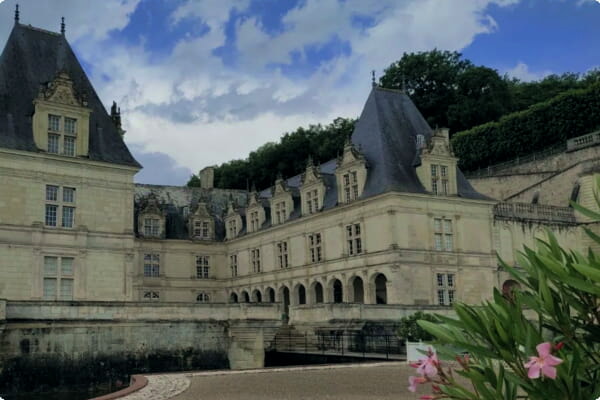Visiting the Chateau de Villandry is a must do for anyone who enjoys beautiful gardens and historic places. There are plenty of free guided tours available and the accessibility of the chateau is also very good. This article will tell you all about the history and gardens of the castle and give you some tips on what to look for and what to bring.
History
Located in Villandry, Indre-et-Loire, France, Chateau de Villandry is a stunning country house. It was built in the early 16th century and is one of the last Renaissance style chateaux in the Loire Valley. It is also famous for its beautiful gardens. The gardens at the chateau are open to visitors almost every day.
A fortress once stood on the site of the present day chateau. The fortress was owned by Geoffroy le Roux, who was one of the most powerful lords in Tourraine. The fortress was destroyed, but the keep was left untouched. The keep served as the site of the signing of 'The Peace of Colombiers' in 1189. This treaty confirmed the authority of the Capetian monarchy over feudal lords.
In the late 18th century, the estate was sold to a family called the Hainguerlots. The new landlords intended to dismantle the castle, but they did not succeed. The new owner, a chemist named Francois-Pierre Le Roux, was unable to afford the costs associated with a castle.
Gardens
Located in the Loire Valley, Villandry is a lovely castle with elegant Renaissance architecture. The original fortress was converted to a luxurious chateau in the 1530s. It is one of the last renaissance style castles in the Loire Valley.
A tour of Villandry is a wonderful experience, whether you're on your own or with a group. The grounds are surrounded by a moat and have three belvederes. The interior is also beautifully decorated, with a Moorish ceiling and 18th century furnishings. The grounds are open to the public year round, and there is free parking. There are also free brochures available with maps and recommended walks.
There are six glorious landscaped gardens at Villandry. Each section is planted with flowers and vegetables twice a year. In addition, there are ornamental vines, box hedges, and more than six hectares of kitchen gardens.
Each bed is divided into intricate geometric shapes. Each vegetable is grown in a contrasting colour. There are also several water features throughout the garden.

Free guided tours
Located in the Loire Valley, Chateau de Villandry is a must-visit. It is a privately owned castle that has been in the family since the early 20th century. The estate is a horticulturist's paradise. The ornamental kitchen gardens and the water garden are among the highlights. The estate is also home to several other gardens.
The Carvallo family bought the property in 1906 and renovated the castle. They wanted to ensure that the style of the chateau matched the style of the family's other properties. The family also wanted the estate's gardens to remain organic, as they were in the past.
Today, the villa is open all year round. Visitors can enjoy the views of the gardens from the terraces or the belvedere. The gardens are open until 7:30 pm in July and August. They are free to enter. Wheelchair users are welcome. They receive an EUR2 discount on the garden ticket.
Accessibility for wheelchair users
Known for its beautiful gardens, Chateau de Villandry is a must-see for those who enjoy nature. The castle is located in the Loire Valley, just a short distance from Tours. It's a popular destination for history lovers who want to learn about the region's rich heritage.
The chateau is accessible to visitors with mobility issues. There are accessible rooms, bathrooms and toilets. In addition, the garden is wheelchair-accessible. Besides the garden, the museum is also accessible.
For those who have limited mobility, the castle offers a free admission for disabled persons. They may also benefit from a discount. Upon request, staff can assist in finding accessible rooms and toilets.
There are flat benches in the reception area. An audio guide is available in several languages. The museum has a reception desk and elevator. Some of the galleries may be closed for social reasons, but staff are always happy to help find an accessible route. Guests with disabilities are also entitled to skip-the-line tickets.





